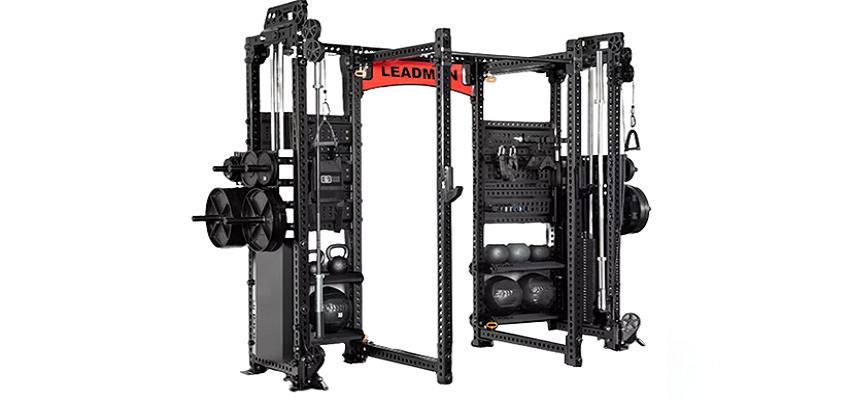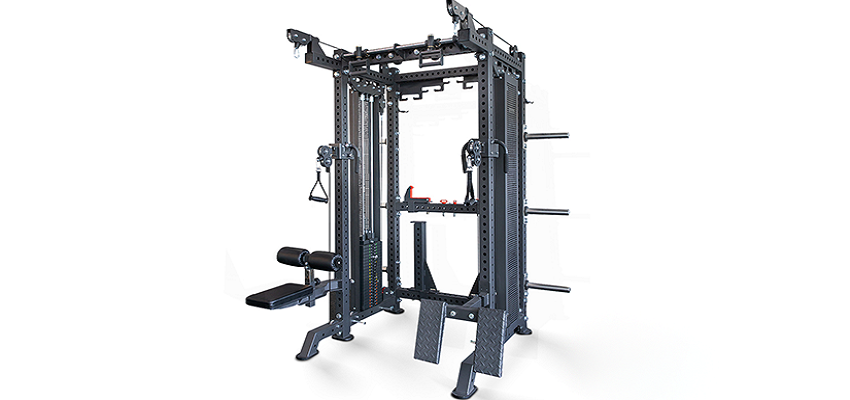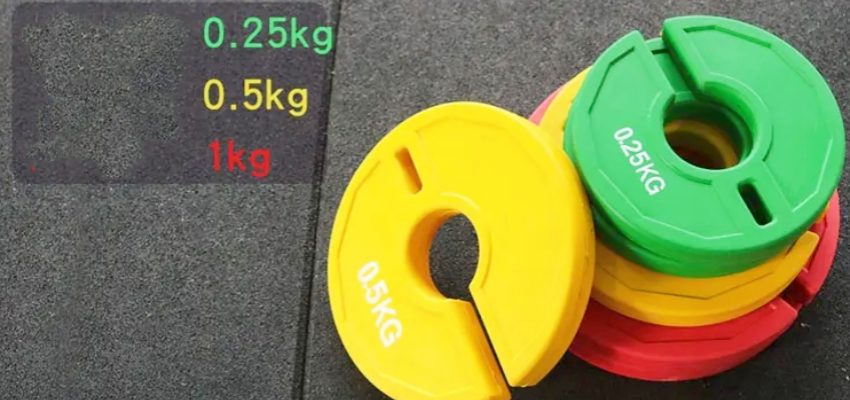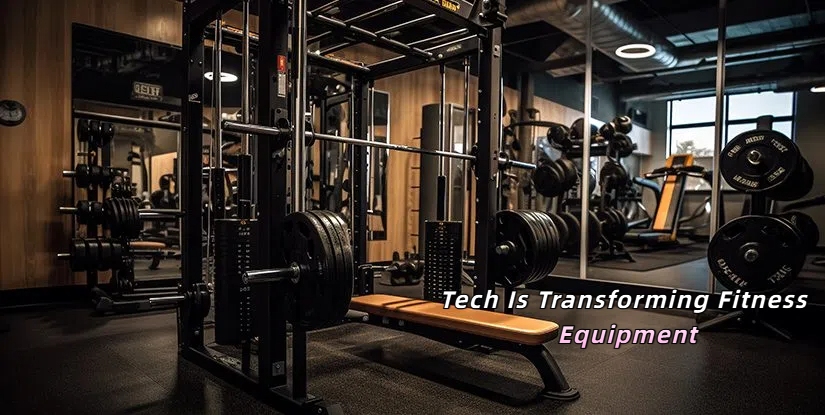In the ever-evolving fitness industry, technology is no longer just a luxury — it’s an expectation. As commercial gyms compete for members in a digital-first world, the integration of smart equipment, AI, and data tracking is redefining how people train, how facilities operate, and how results are measured.
At Leadman Fitness, we understand that our clients — from gym chains and universities to corporate wellness centers — are no longer just buying equipment. They’re investing in intelligent fitness ecosystems that align with user demands and modern business goals. In this article, we explore how emerging technologies are transforming fitness equipment, and how gym operators can future-proof their investments.
The Role of Smart Technology in Fitness Equipment
The rise of smart fitness equipment is changing the way people engage with workouts. Machines are now built with integrated sensors, Bluetooth, Wi-Fi, and mobile app compatibility. These features allow users to:
- Track reps, sets, and rest periods
- Monitor heart rate, calories burned, and time under tension
- Sync workouts with personal devices and training apps
This level of connectivity doesn’t just enhance the user experience — it creates a data loop that gym owners can leverage to analyze equipment usage, optimize space, and personalize services.
At Leadman Fitness, we supply high-quality essentials like barbells, weight machines, and dumbbells, all designed to be compatible with modern training setups. While our core equipment is analog, it can be easily integrated into hybrid environments with smart sensors and tracking accessories.
How AI and Data Analytics Are Powering the Gym of the Future
Artificial Intelligence (AI) is rapidly becoming a backbone of fitness personalization and operational efficiency. From smart mirrors offering AI-guided training to data-driven equipment usage forecasting, AI is enabling gyms to offer tailored experiences at scale.
For example:
- Members receive custom training plans based on previous performance
- Equipment maintenance can be predicted before breakdowns
- Gyms can track peak hours and optimize layouts accordingly
As a supplier, we work with our clients to help them select equipment that can grow with their tech infrastructure. We encourage gym owners to think beyond individual machines and towards systems and strategies that support AI integration long-term.

Integration of Wearable Tech and Gym Equipment
Today’s gym members are showing up with more than just water bottles — they’re bringing wearable fitness devices like smartwatches, heart rate monitors, and mobile fitness apps.
The integration of these wearables with gym equipment creates a seamless feedback loop:
- Users can see real-time data while lifting barbells or doing kettlebell swings
- Smart machines automatically adjust resistance based on fitness level
- Trainers can access detailed reports to fine-tune programs
While many commercial machines now include this functionality, there is a growing opportunity to enhance traditional strength zones with compatible systems. At Leadman Fitness, our dumbbells, bumper plates, and kettlebells are designed with modular gym layouts in mind — so they work well in both classic and tech-enhanced setups.
Virtual and Augmented Reality in Training
Virtual Reality (VR) and Augmented Reality (AR) are adding entertainment and immersion to workouts. VR-enabled cardio equipment and AR-based functional training games are gaining traction in high-end gyms and boutique studios.
This technology allows members to:
- Compete in virtual races
- Take part in immersive bootcamps
- Overlay instructional guides onto equipment use
Though these technologies are still maturing, we foresee a future where AR is integrated into standard barbell or dumbbell training, offering visual cues for form correction or rep counting.
As suppliers, we advise our clients to plan for this by choosing versatile equipment that fits within open, tech-flexible spaces.

Sustainability and Smart Energy Use in Gym Equipment
With growing awareness around environmental impact, fitness centers are turning toward sustainable practices. Equipment is now being designed to generate or conserve energy. For example:
- Some cardio machines convert kinetic energy into electricity
- Strength machines are being built with recycled steel and eco-safe plastics
- Gyms are optimizing layouts for energy-saving lighting and airflow
This trend also brings tax benefits in certain U.S. states and supports corporate ESG (Environmental, Social, and Governance) goals. At Leadman Fitness, we offer equipment built with long-lasting, recyclable materials, helping our clients reduce waste and promote sustainable training environments.
How Leadman Fitness Supports the Evolution of Smart Gyms
At Leadman Fitness, we believe in delivering more than just strength — we deliver solutions for the future of fitness. Whether you’re a gym franchise outfitting a flagship location or a startup training studio preparing for launch, we help you navigate the technology shift without sacrificing durability or performance.
Our product lines — including Bumper Plates, Barbells, Weight Machines, Kettlebells, Dumbbells, and more — are:
- Built for commercial-grade performance
- Compatible with a wide range of tracking accessories and systems
- Designed to adapt to hybrid fitness models combining traditional and smart training
We actively collaborate with B2B buyers across the U.S. to align equipment selections with tech roadmaps and market trends. Whether your focus is member retention, data collection, or operational efficiency, we’re here to help you build a gym that’s built to last — and ready to evolve.
The integration of smart technology into gym equipment isn’t a passing trend — it’s a new standard. Gyms that embrace this shift will see higher engagement, stronger retention, and better operational control. For B2B buyers, this means choosing suppliers who understand this evolution and can offer equipment that complements your long-term vision.

At Leadman Fitness, we combine durability, versatility, and modern compatibility to help our clients stay ahead. If you’re looking to build a smarter, stronger gym — we’re ready when you are.
Contact Leadman Fitness today to learn how our product lines can be integrated into modern smart gyms. Whether you’re outfitting a hotel, university, corporate wellness center, or fitness franchise, we’re here to help.
FAQs about Fitness Equipment Technology
In today’s fitness industry, technology is transforming everything from user experience to gym operations. As a fitness equipment supplier, we’ve seen commercial gyms increasingly adopt:
Smart Equipment: Machines with built-in sensors, digital displays, and Bluetooth/Wi-Fi connectivity for real-time tracking and cloud-based data syncing.
AI-Powered Systems: Artificial intelligence is used for personalized training recommendations, predictive maintenance, and automated equipment settings.
IoT (Internet of Things): Devices communicate with one another, allowing gym owners to track usage, optimize floor layout, and monitor energy efficiency.
Touchless Check-ins & Digital Interfaces: For member convenience and hygiene, gyms use RFID, NFC, and mobile app-based access to reduce friction.
Virtual Training Platforms: Equipment integrated with digital content platforms (like Peloton-style group training) for interactive workouts.
At Leadman Fitness, we supply core equipment (like barbells, dumbbells, and weight machines) that is designed for modular integration with tech accessories — allowing gyms to stay competitive without replacing their entire setup.
Wearable fitness technologies have become standard tools for tracking progress and engaging gym members. From our perspective as a B2B supplier, the most impactful wearables include:
Smartwatches & Fitness Trackers (e.g., Apple Watch, Fitbit, Garmin): These track steps, heart rate, VO2 max, and other vital stats, often syncing directly with compatible gym equipment.
Heart Rate Monitors: Used widely in functional training and HIIT studios to monitor performance in real-time.
Smart Clothing: Apparel embedded with sensors that track posture, movement quality, and muscle engagement.
Connected Footwear: Shoes that track gait, stride, and power output.
As more gyms integrate wearable connectivity into their ecosystems, we recommend that buyers choose equipment setups that support open APIs and accessory integration. At Leadman Fitness, our strength and conditioning equipment is designed to complement wearable data collection by facilitating accurate, repeatable performance.
Generally, fitness equipment is categorized into three main types — each of which we supply in bulk for commercial gyms, training facilities, and institutional buyers:
Cardio Equipment: Treadmills, ellipticals, rowing machines, bikes — many of which now come with interactive screens, internet access, and biometric feedback.
Strength Equipment: Barbells, dumbbells, kettlebells, weight machines, and bumper plates. This category is our specialty at Leadman Fitness, and many of our items are compatible with smart gym environments.
Flexibility/Functional Equipment: Resistance bands, stability balls, suspension trainers, and functional rigs. These tools are often used in mobility sessions or dynamic group workouts, increasingly paired with AR/VR enhancements.
Technology is redefining the fitness industry — not only in how people train, but also in how gyms operate and scale. From our perspective as a supplier, the biggest changes include:
Hyper-Personalization: Members expect workouts customized to their goals, tracked through wearables or apps. Equipment now includes smart sensors and AI to support this demand.
Hybrid Fitness Models: Gyms are combining in-person and virtual classes. Equipment must be camera-friendly, space-efficient, and adaptable to multi-use formats.
Data-Driven Decision Making: Gym owners are using analytics to determine equipment ROI, member behavior, and peak usage times — informing smarter layout and investment decisions.
Sustainability & Smart Energy Use: Technology allows equipment to be more energy-efficient or even regenerative (e.g., cardio machines that produce electricity), which appeals to eco-conscious businesses and consumers.
At Leadman Fitness, our mission is to help B2B customers select future-proof fitness equipment that can evolve with these trends. We focus on providing durable, versatile products that can be enhanced with technology over time — rather than quickly becoming obsolete.
Welcome! I’m Jordan Mitchell, the dedicated editor at Leadman Fitness, where we specialize in manufacturing high-quality bumper plates, barbells, weight machines, kettlebells, and dumbbells. With a passion for fitness and a keen eye for detail, I ensure that our product information is clear, accurate, and engaging for our customers. My role involves collaborating closely with our design and production teams to highlight the innovative features and superior craftsmanship that set Leadman Fitness apart in the industry. Whether you’re a professional athlete or a fitness enthusiast, I’m here to provide you with the information you need to achieve your training goals with our top-of-the-line equipment.
